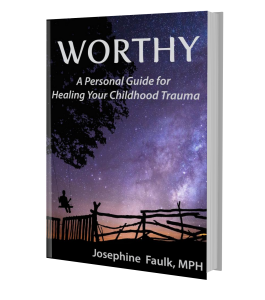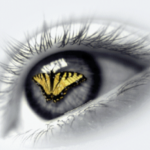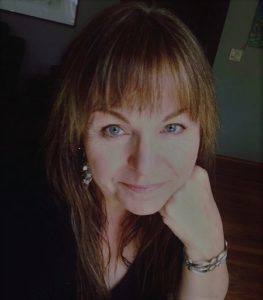Tricking Childhood Trauma–The Happy Memories Exercise

We are no longer victims. Although we most certainly suffered through childhood trauma we also had many positive experiences, sometimes even with those who caused us the most pain. We can get so caught up in our victim role that we refuse to acknowledge many of the good memories of our childhood, as if it would somehow dim the glare of our victimhood, thus making our suffering less valid. Or possibly, if we are dealing with shame, we may believe we don’t deserve any good memories. Either way, that’s how we stay stuck with the old tapes that replay endlessly. Some rewiring of our brain is in order here. If we want to be different we must see ourself and our past differently. We are not erasing any of it, we are just refocusing.
Happy Memories Exercise
This is an exercise I developed accidentally. One day I was driving down a sunny street, while stopped at a traffic light, out of nowhere (that would be my brain) comes the realization that I very (very,very) rarely entertain any happy memories from my childhood. “Why is that? I earnestly asked myself. The answer came, “Because you think you don’t deserve it.” “Holy mother of pearl, I think you’re/I’m (pronouns get rather tricky when talking to yourself) right.” That whole concept pestered me for days, until I finally pulled out my journal and began listing every pleasant memory I could recall with each significant person from my childhood. Gondwanaland-sized paradigm shifts followed. And now it’s your turn.
Allow yourself a couple hours of uninterrupted time to do this. Remove all distractions, i.e. turn off your phone. Record this exercise somewhere you can easily access it to review at will. Begin with making a list of all the significant people of your childhood, no matter whether you view them positively or negatively. Include teachers, neighbors, babysitters, relatives anyone whom you feel strongly influenced your experience of life. Those of us with post childhood trauma symptoms in adulthood have a tendency to perceive situations and people (including ourselves) in an all or nothing sort of way. This exercise is going to ease the pain of that restrictive viewpoint and alter some of your perceptions in surprising ways. Start by choosing one significant person from your list; write their name across the top of the page. Using bullet points and working in whatever order the memories come to you begin to list the happy memories you associate with this person. Write as little or as much as you wish for each one. It’s important that you not stop to think about, analyze, judge or process these memories at this time. Just get them written down for now. Leave room to add more memories that may come to you later.
Repeat this on a fresh page with the next person. Do as many as you feel comfortable with in one sitting, saving the rest for another day. Remember to pace yourself as these exercises inevitably bring things to the surface. Usually wonderful self-discoveries occur accompanied by feelings of liberation and joy; sometimes it’s a circumvent route to get to that though. Persevere. Do not go back and read the memories yet. Put your writing away and let it rest for a few days as your subconscious works out the opposing feelings you will find yourself experiencing. You don’t need to wrestle with this part of it. Only feel the feelings and ride them out as your mind and heart make the necessary adjustments. After a few days (or whatever length of time feels right to you), find a quiet spot and read slowly through your lists of happy memories. Close your eyes and allow your mind to wander back to each particular memory. Recall the details of it, the location, the season and weather of that day, what you were wearing, what you did and how you felt about it. Did you feel significant, loved, safe, happy, excited? Rest in those good feelings for a few moments before moving on to the next happy memory. Restrain yourself from going to any negative associations while doing this exercise. Use self-discipline to stay the happy course. Our happy memories are every bit as much our life experience, and a part of who we are, as was the trauma.
As I assimilated the effects of this exercise I began to feel differently about certain significant persons on my list, which I had spent a lifetime vilifying. Their own vulnerability became more apparent to me. I slowly came to understand that the part of them that had caused harm in my life really had nothing whatsoever to do with me. I was innocent, a mere child. It was no reflection on my worth. It was them acting out their own feelings of defectiveness and yearning for acceptance. I knew exactly what that felt like and I eased a little more into the realm of forgiveness.
Available at Amazon > Worthy: A Personal Guide for Healing Your Childhood Trauma
Before you go, I want to invite you to join our Worthy Community. By signing up (the form is in the sidebar) you will receive:
* Chapter One of my book WORTHY A Personal Guide for Healing Your Childhood Trauma immediately
* Personal delivery of my entire Monday blog post weekly
****************************
You can find and subscribe to me spreading the love at:
https://www.instagram.com/worthyasweare/
https://www.facebook.com/healingyourchildhoodtrauma/
https://www.pinterest.com/azsunnygrl/worthy-as-we-are/




